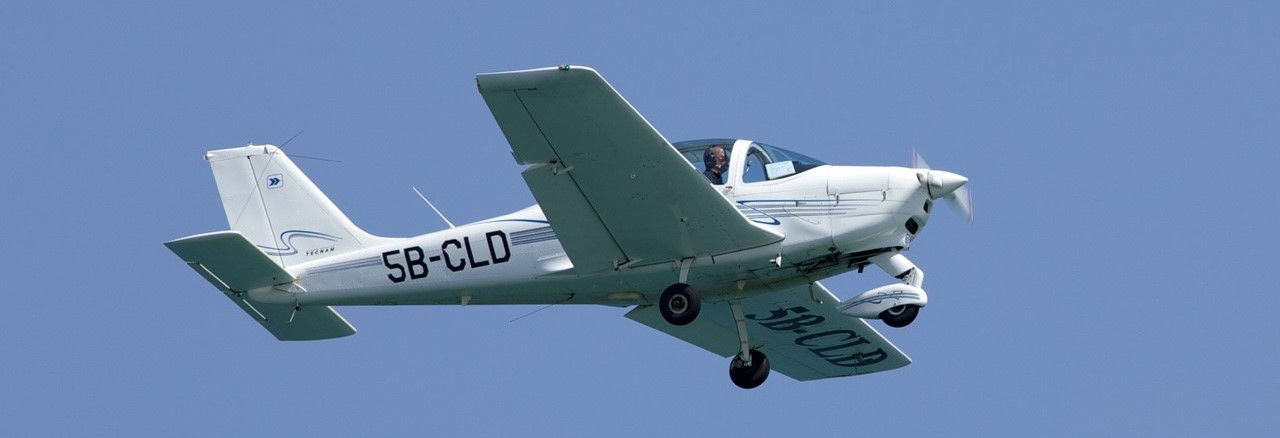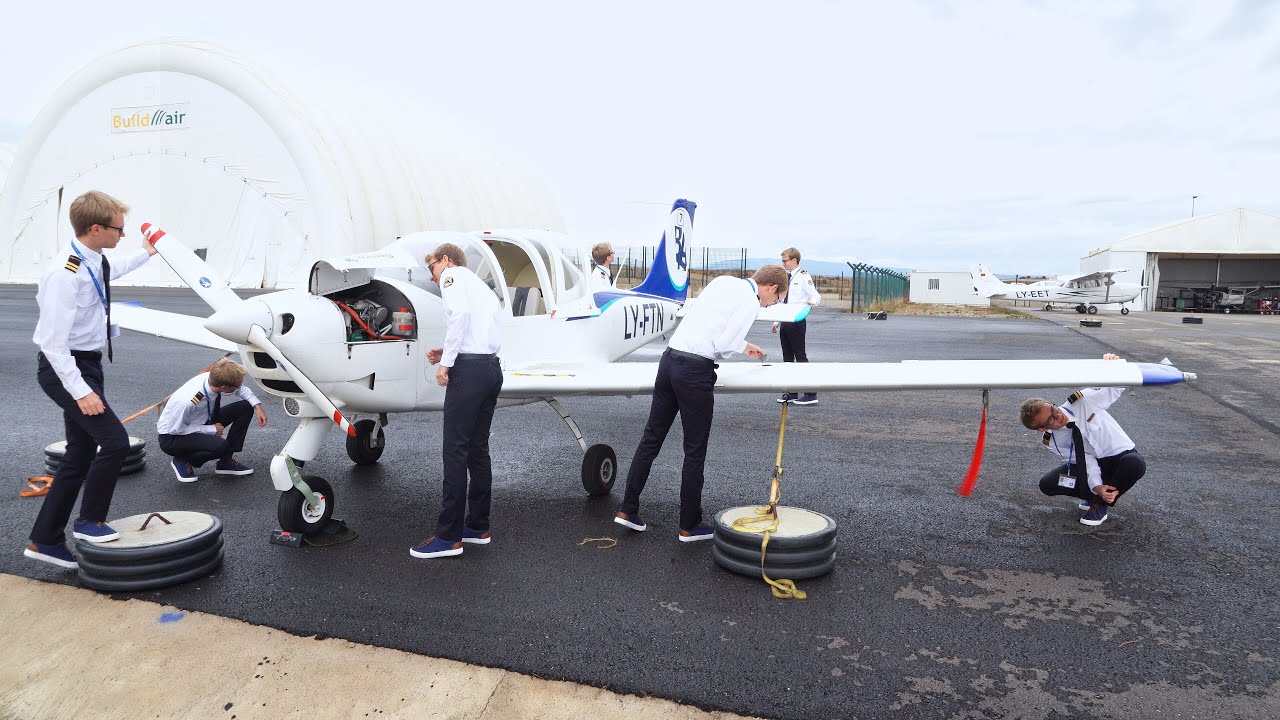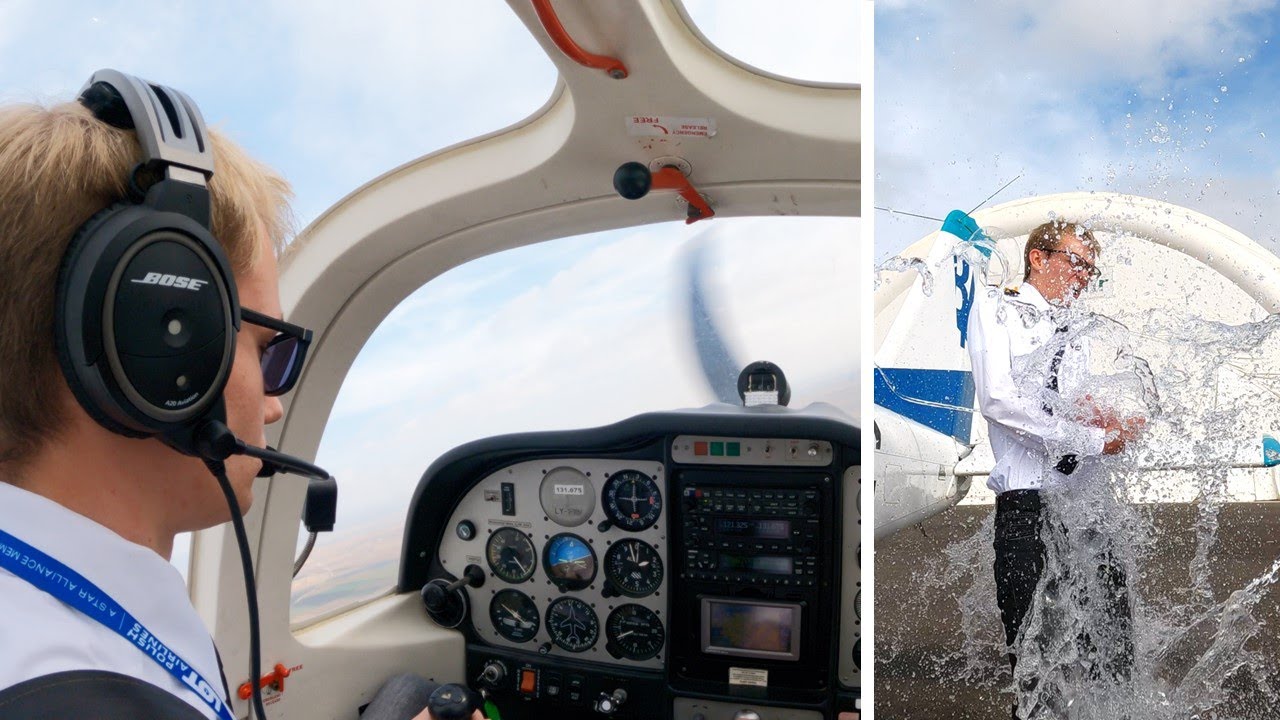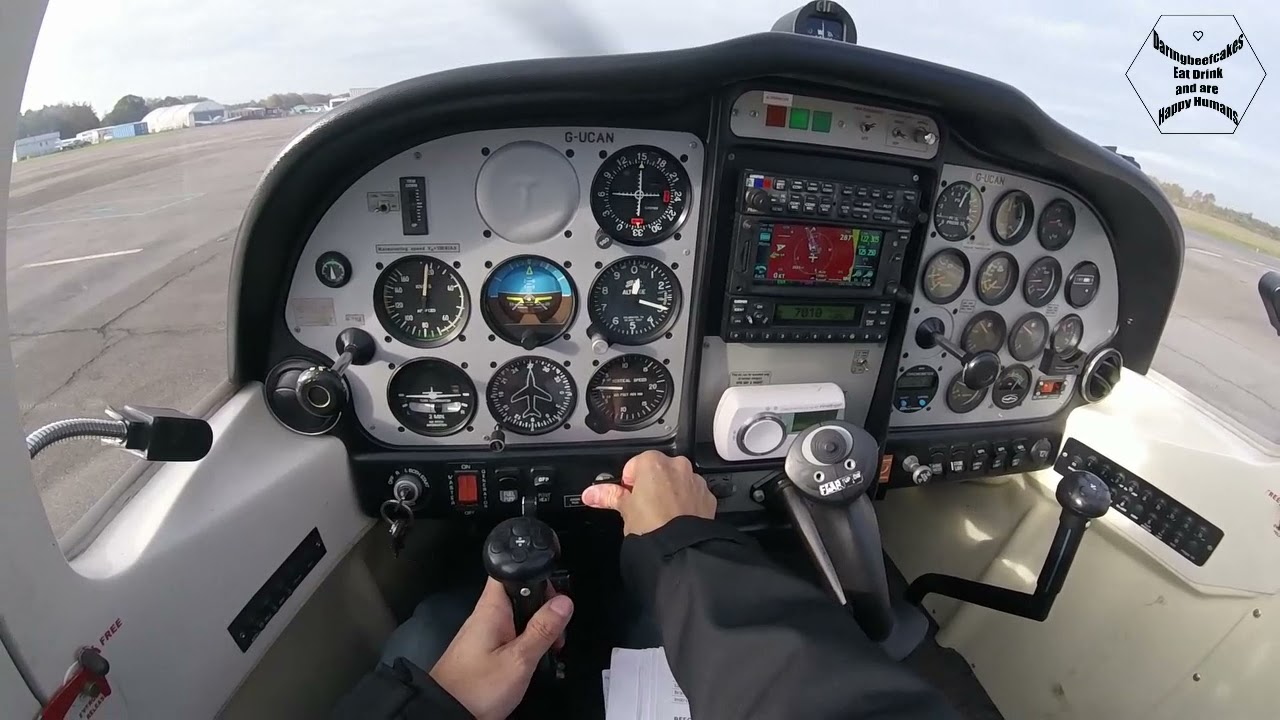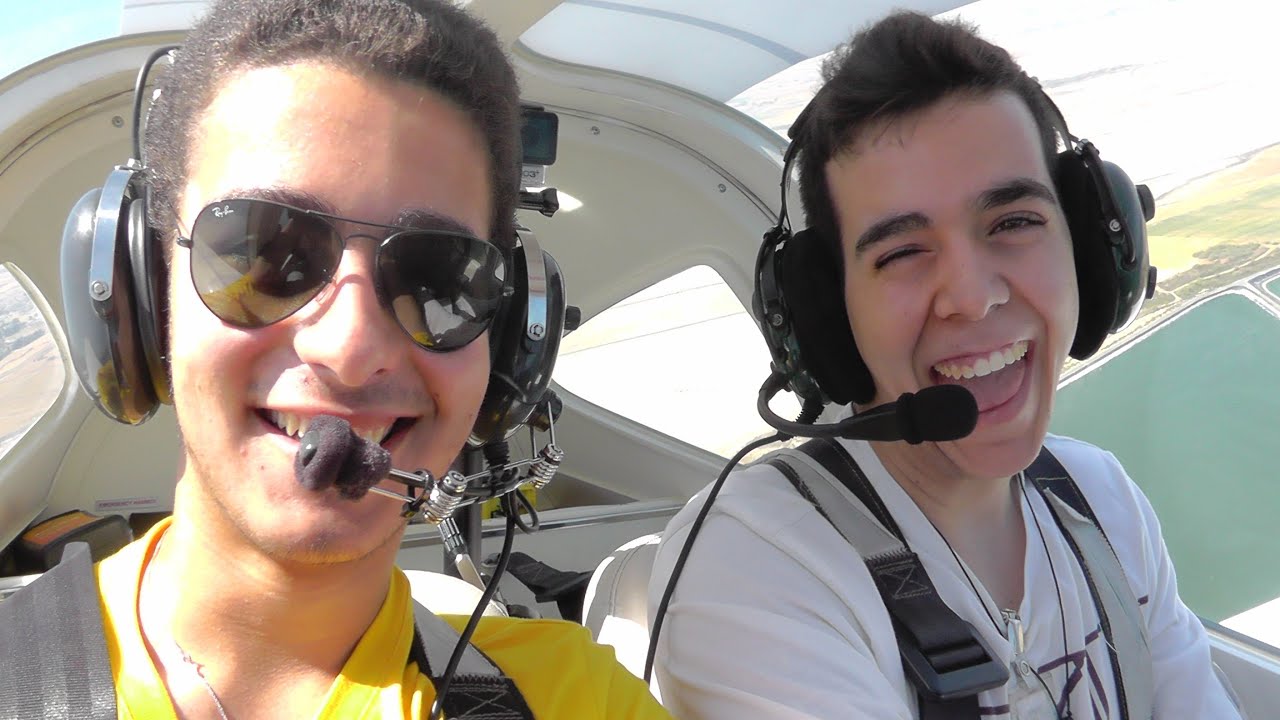Tecnam P2002 JF
Tecnam P2002-JF
JF = certified version
Our primary training aircraft, the Tecnam P2002-JF, was bought new from the factory in 2011 and was previously under CAMO with Airmotive Aviation Ltd. Aircraft continuous airworthiness and maintenance is now under EASA Part-CAO with ITAER INGENIERIA SL, Madrid and impeccably maintained by Turmina General Aviation Maintenance. All ADs are complied with. The aircraft is in very good condition overall.

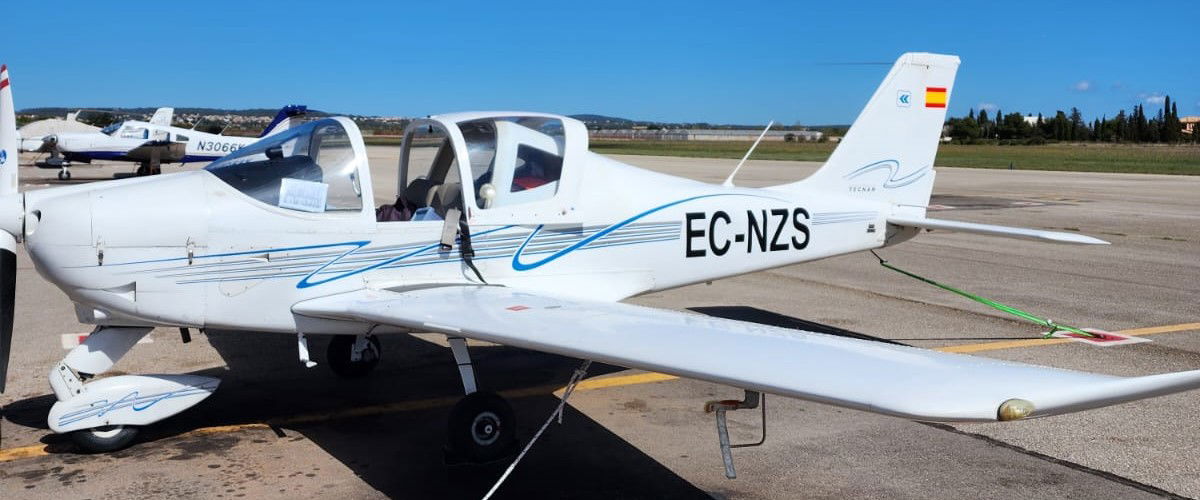
In 2016 the Argentine Air Force ordered the Tecnam P2002JF as its primary trainer, as did the (Greek) Hellenic Air Force in 2018.
With a modern design and low operational costs, the Tecnam P2002-JF is Fly EPT Spain's training aircraft of choice. Easy to fly and maintain, the P2002-JF is an excellent aeroplane for the training of ab-initio student pilots.
Tecnam P2002-JF - Aircraft Flight Manual (AFM)
The Aircraft Flight Manual (AFM), sometimes referred to as the Pilot Operating Handbook (POH), has been prepared to provide pilots and instructors with information for the safe and efficient operation of this very light aeroplane. Pilots should familiarize themselves with the AFM, Pilot Checklist and Pilot Radio Calls for Son Bonet Airport, Palma de Mallorca.
Tecnam P2002 JF - Pilot Checklist
Radio Calls for Pilots at Son Bonet Airport (LESB)
Local Flight Rules - Mallorca & Son Bonet Airport (LESB)
Pilot Log (PLog) - VFR Navigation Log (NAVLOG) - WORD - template
This is a free PLOG - Pilot Log - Used for VFR navigation planning, also called a NAVLOG. Download and customize, as you see fit
Type-Certificate Data Sheet
Tecnam P2002-JF Walkaround and Preflight Inspection
You can follow Pilot Jonathon's inspiring journey from humble beginnings flying the TECNAM P2002-JF during his PPL course all the way to Boeing B737 base training with Ryanair here
Tecnam P2002-JF Instrument Panel
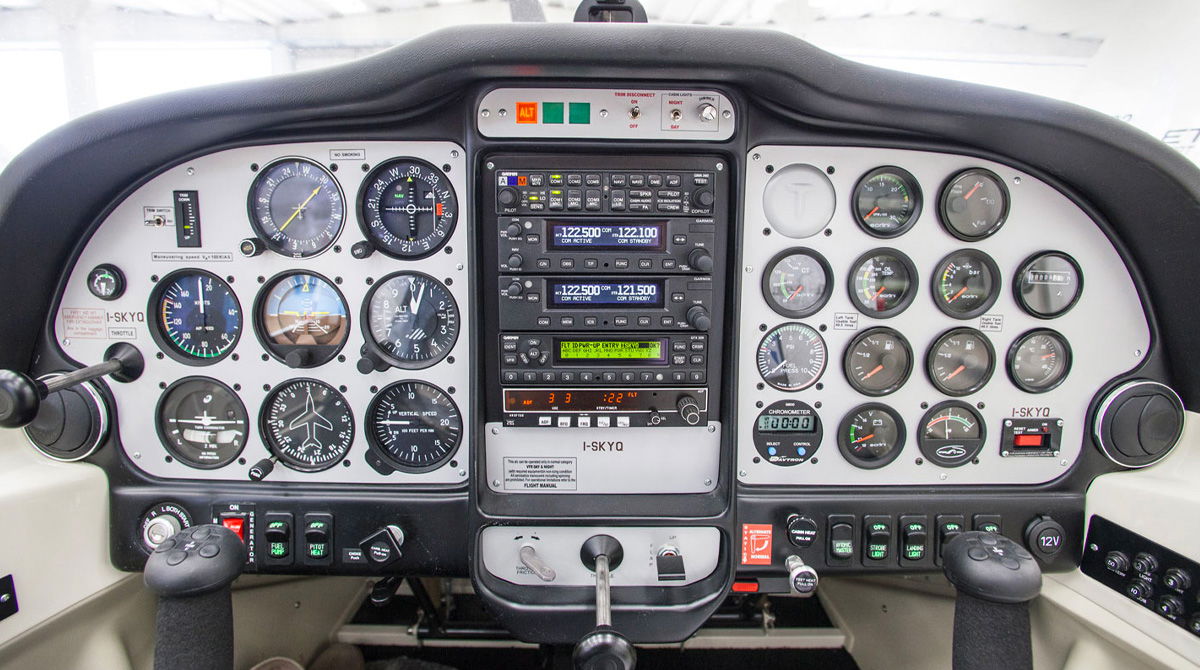
Garmin G5 Electronic Flight Instrument
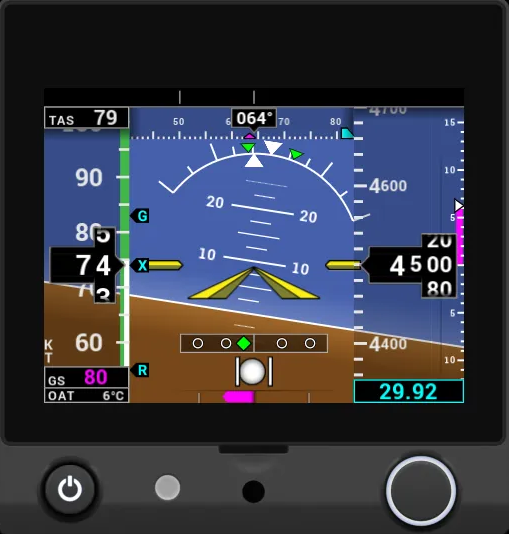
Tecnam P2002-JF
Features:
Low-wing. Single-engine aircraft. Fixed landing gear. Analogue instruments
Avionics
Our Tecnam P2002 aircraft has a Garmin 430 NAV/COM with a GMA 340 audio panel and a GTX-330 transponder Mode S which is an IFR-certified transponder with datalink capability, including local traffic updates. VFR button for quick-and-easy VFR squawking. Functions: flight time, count-up, count down timers, current pressure altitude. Remote ident and auto standby, altitude monitor with voice alerting. Level 2 Mode-S - satisfies upcoming European Mode-S mandate for Elementary Surveillance.

Garmin GMA 340 Intercom - Pilot's guide here - Watch the video how to use here and here
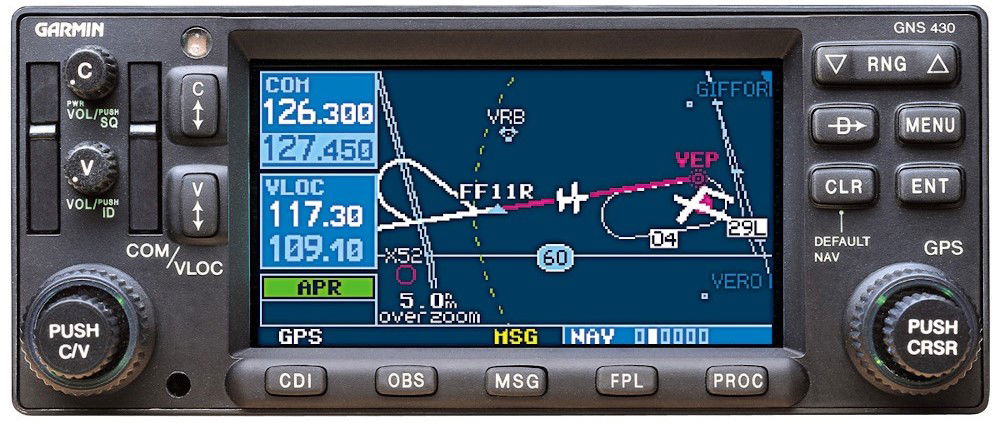
Garmin 430 - GPS/Nav/Comm - Watch video for instructions how to use here

GTX-330 Transponder - watch video how to use here
Technical Sheet
- Manufacturer: Tecnam
- Max Seats: 2
Supplementary information
- Approved for Day & Night VFR flying.
- Operations in non-icing conditions only.
- All aerobatic maneuvers including spinning are prohibited.
- Type certified by EASA in CS-VLA category (i.e. very light aircraft)
Performance - Fixed Pitch Propellor (Hoffman Fixed Pitch PN HO17GHM A 174 177 C)
- Max cruise speed: 122 KIAS (140 mph, 226 km/h)
- Stall speed (flaps down, power off): 41 Kt. (76 km/h)
- Max Operating Altitude: 14,000 ft (Fly EPT Spain restriction: 10,000 ft AMSL)
- Range: 535 NM (991 km)
- Rate of Climb: 874 ft/min (4.4 m/sec)
- Take Off Run: 237 m (777 ft)
- Take Off Distance: 392 m (1292 ft)
- Landing Run: 538 ft (164 m)
- Landing Distance: 1056 ft (322m)
Weight & Loading
- Baggage allowance: 20 kg
- Useful Load: 240 kg
- Maximum Take Off Weight (MTOW): 620 kg
- Empty Weight, Standard: 380 kg
Powerplant
- Powerplant / Engine: Rotax 912 S2
- Engine Power: 100 HP
- Propellor: 2 Blade Fixed Pitch (Hoffman Fixed Pitch PN HO17GHM A 174 177 C)
Fuel
- Fuel tank capacity: 26 US Gal (100 liters)
- Two (2) wing fuel tanks: 50 liters each side
- Fuel Consumption: 4.5 USG/hr. (17 liters/hr.)
- Fuel type: MoGas and AvGas
Fuel indicator is calibrated as follows:
Indicator Fuel Quantity | Liters |
0 | 0.5 |
1/4 | 15 (+3 / -3) |
1/2 | 25 (+3 / -3) |
3/4 | 35 (+3 / -3) |
4/4 | 50 (+0 / -3) |
You must land with a final reserve of 45 minutes of fuel i.e. a total of 13 liters
MOGAS in Binissalem Aerodrome, Mallorca
MOGAS can be found near Binissalem Aerodrome, at REPSOL and EROOSKI 24-hour gas stations. Check map here
The Tecnam P2002 has a ROTAX engine which accepts ordinary unleaded 95 MOGAS, and it is far cheaper to fill up with MoGAS using these 20-litre plastic jerry cans at the local petrol station than to fill up with AVGAS which is more expensive. Budget conscious hour builders can refuel in this manner, and make some fuel savings.
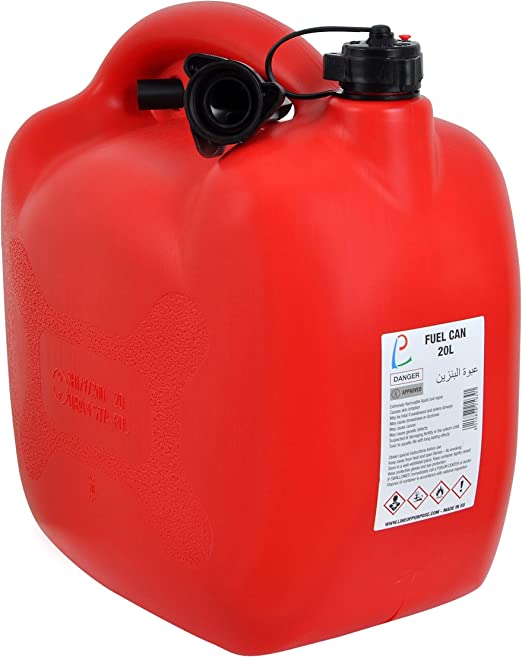
OIL
- Max oil capacity: 3.0 liters
- Min oil capacity: 2.0 liters
- Minimum recommended Oil level before Takeoff: 2.5 litres
- Max Oil consumption: Max: 0.1 liters/hour
- The only Oil recommended by ROTAX for the engine: Aeroshell Oil Sport Plus 4
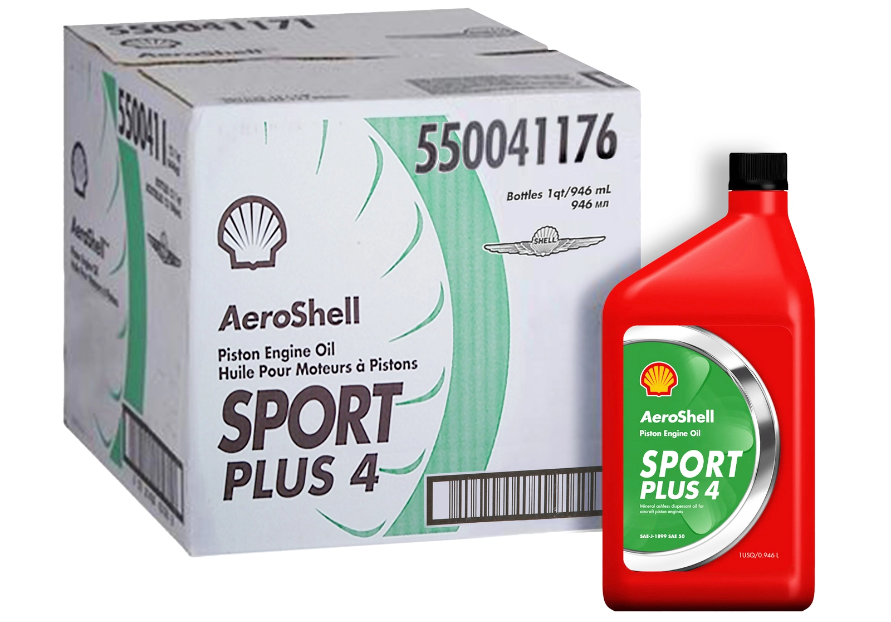
The pilot is responsible for ensuring that the airplane is properly loaded. Refer to AFM Section 6, page 104+ for appropriate loading instructions
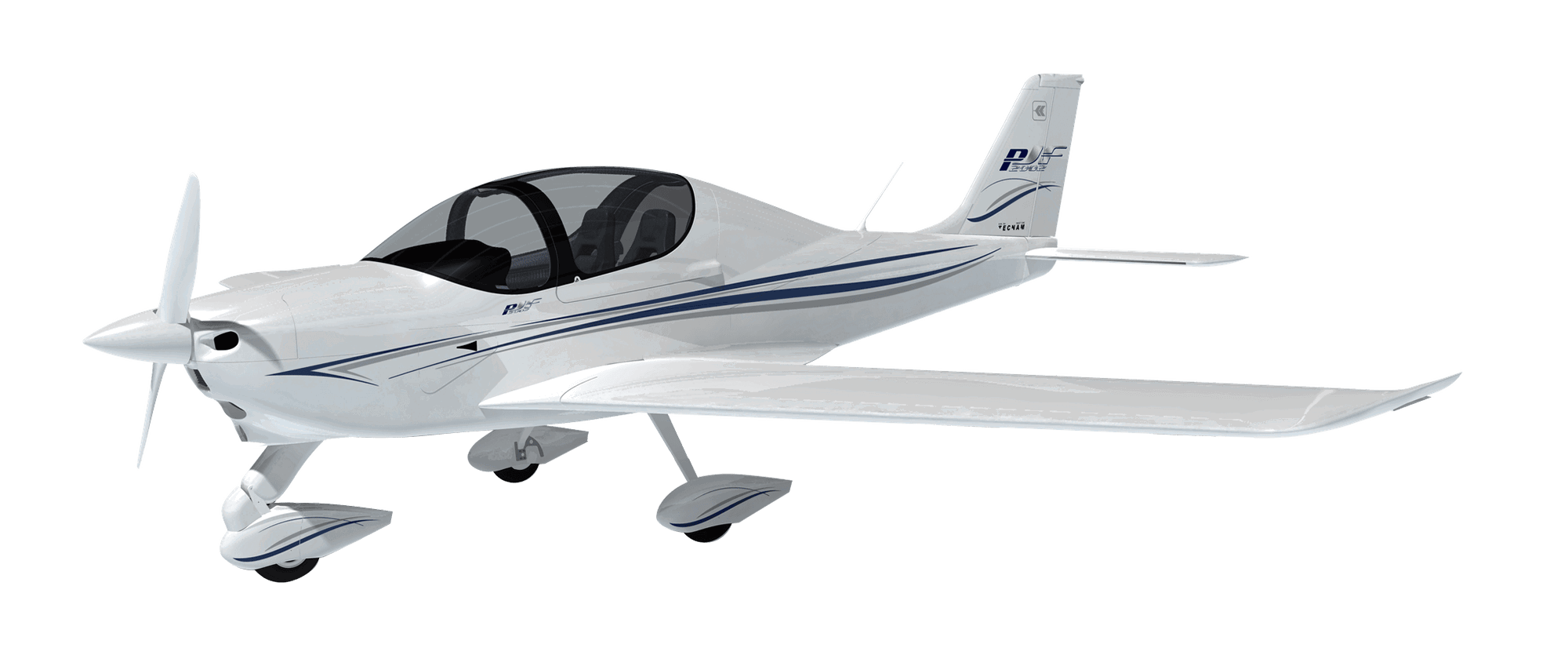
Tecnam P2002 JF
The Tecnam P2002JF is a 2-seat, single engine, low wing aircraft developed for basic pilot training needs by Italian manufacturer Costruzioni Aeronautiche Tecnam.
Powered by the popular ROTAX 912 engine and with avionics that incudes the GARMIN GMA430, the P2002JF is one of the world’s most popular single engine trainer aeroplanes used by so many civilian and military flight schools.
The P2002JF is certified according to the rules of the European Aviation Safety Agency (EASA) under certification specification CS-VLA i.e. Very Light Aircraft, is approved for flight training for the Private Pilot Licence (PPL) and the aircraft is equipped with Night Visual Flight Rules (NVFR) instrumentation systems.
P2002JF cockpit, avionics, design and features
The sliding canopy allows 360° of vision in the cockpit and offers high forward visibility over the cowling.
The flight deck integrates dual control sticks with an electric stabiliser.
P2002JF features a fuselage installed with a fixed tricycle landing gear including a steerable nose wheel and dual conventional rudder pedals.
With a maximum take-off weight (MTOW) of 620kg, it can carry a useful load of 240kg, while the luggage area behind the seats can hold 20kg of baggage.
The cockpit/cabin can accommodate a pilot and a co-pilot in a side-by-side seating arrangement. The adjustable seats are equipped with seat belts and shoulder harness systems.
The cabin features wall-to-wall carpeting, Map E storage pockets, fire extinguisher, soundproofing, first aid kit, fresh air vents, a heating system and an emergency hammer.
The Tecnam is equipped with a wide, conventional-type analogue instrument panel integrating a standard Garmin avionics package. The avionics suite includes a GMA 340 audio panel, communications system, Mode S transponder, magnetic compass, airspeed indicator, altimeter, heading and attitude indicators, flaps indicator and engine instruments.
Headset
ASA AirClassics HS-1A flight headset can be purchased upon arrival at the Fly EPT Spain office, Son Bonet Airport, Palma de Mallorca
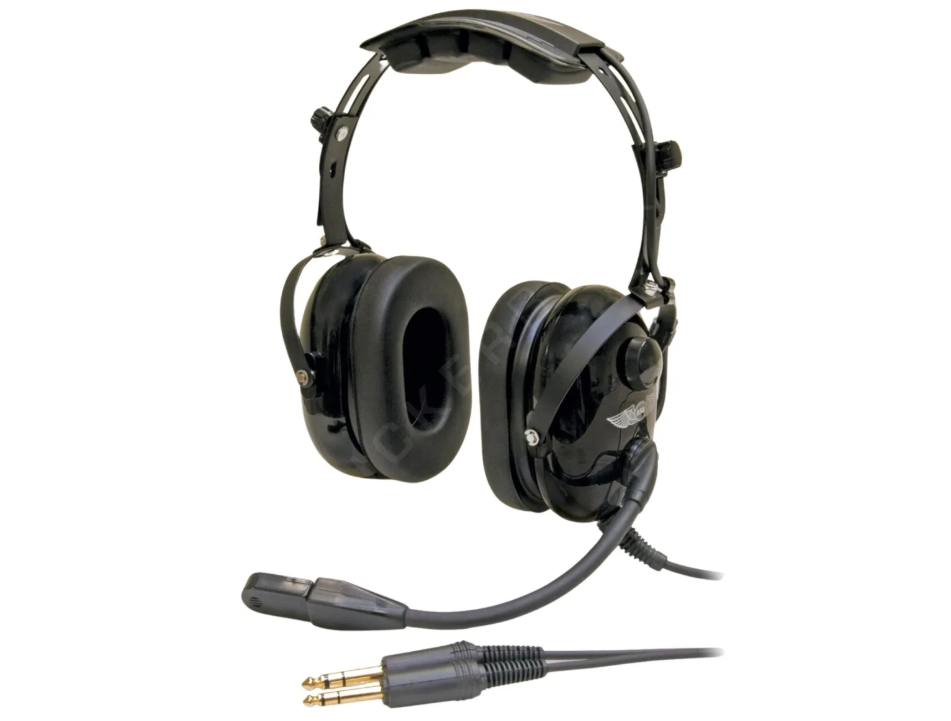
Aviation Headset Jack Adapter for Tecnam P2002-JF
The Tecnam accepts any Twin Plug headset, which are the most commonly used general aviation pilot headset, which have two plugs at the end of the cable. The slightly larger one is for headphone audio and the smaller one is for the microphone on the headset.

Best aviation Headset for general aviation pilots
Two of the best and most popular aviation Headsets for general aviation aircraft include the Bose A20 (which can also be used on Airbus A320 and Boeing B737), and the David Clark h10-13.4 Aviation Headset
ROTAX 912 S2 engine
The Tecnam P20002JF is powered by a ROTAX 912 S2 four-stroke engine driving a 2-bladed fixed-pitch propeller.
The engine has a rated power output of 98hp (73kW) and burns AVGAS and MOGAS unleaded automotive fuel with up to 10% ethanol content.
Tecnam P2002-JF Instrument Panel
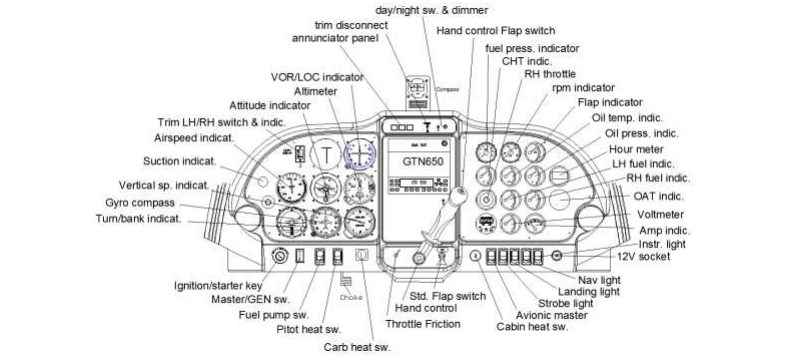
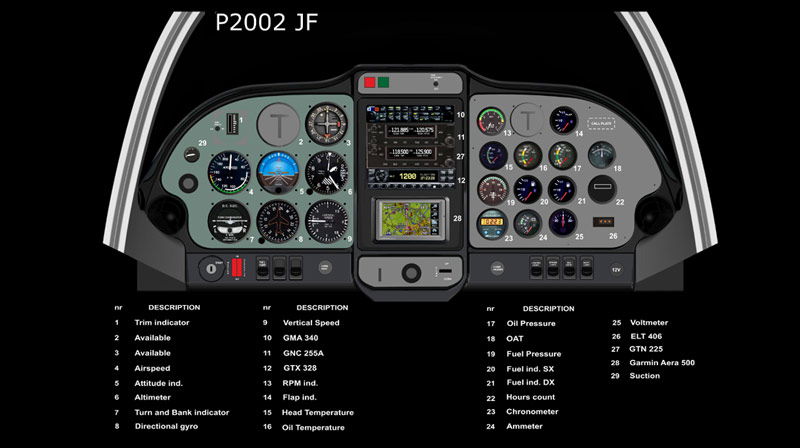
On Board Survival Equipment
With the aircraft being based in Palma de Mallorca, Spain there is an element of some cross country flight over water to reach the neighbouring islands of Menorca, Ibiza and mainland Spain. With safety always on our mind first and foremost, we'd like to address a few points.
Firstly, Fly EPT Spain's Tecnam P2002 aircraft continuous airworthiness and maintenance program is under EASA Part-CAO. This aircraft has been impeccably maintained since purchased new. Maintenance is never deferred. All ADD's are complied with.
While the risk of an engine failure is relatively low, risk can be further minimized by the pilot in command ensuring the following safety checks.
- Before commencing flight over water, fill up the tanks with maximum fuel.
- Always check the fuel for water contamination before flight (let the tanks settle for 15 minutes before sumping them after adding fuel)
The following survival equipment is generally left onboard the aircraft (you must check before flight) and the flight plan annotated accordingly:-
- Emergency Radio
- ELT
- VHF (Hand held radio)
- Survival Equipment (Maritime)
- 2 x Life Jackets
- 2 x inflatable boats (each boat holds 86 kgs), paddles, pump

